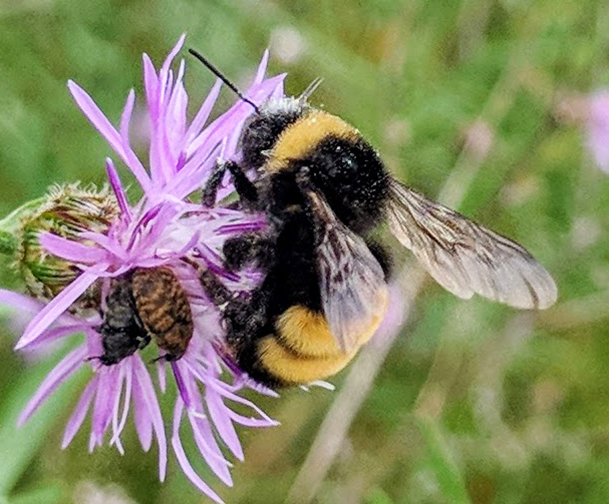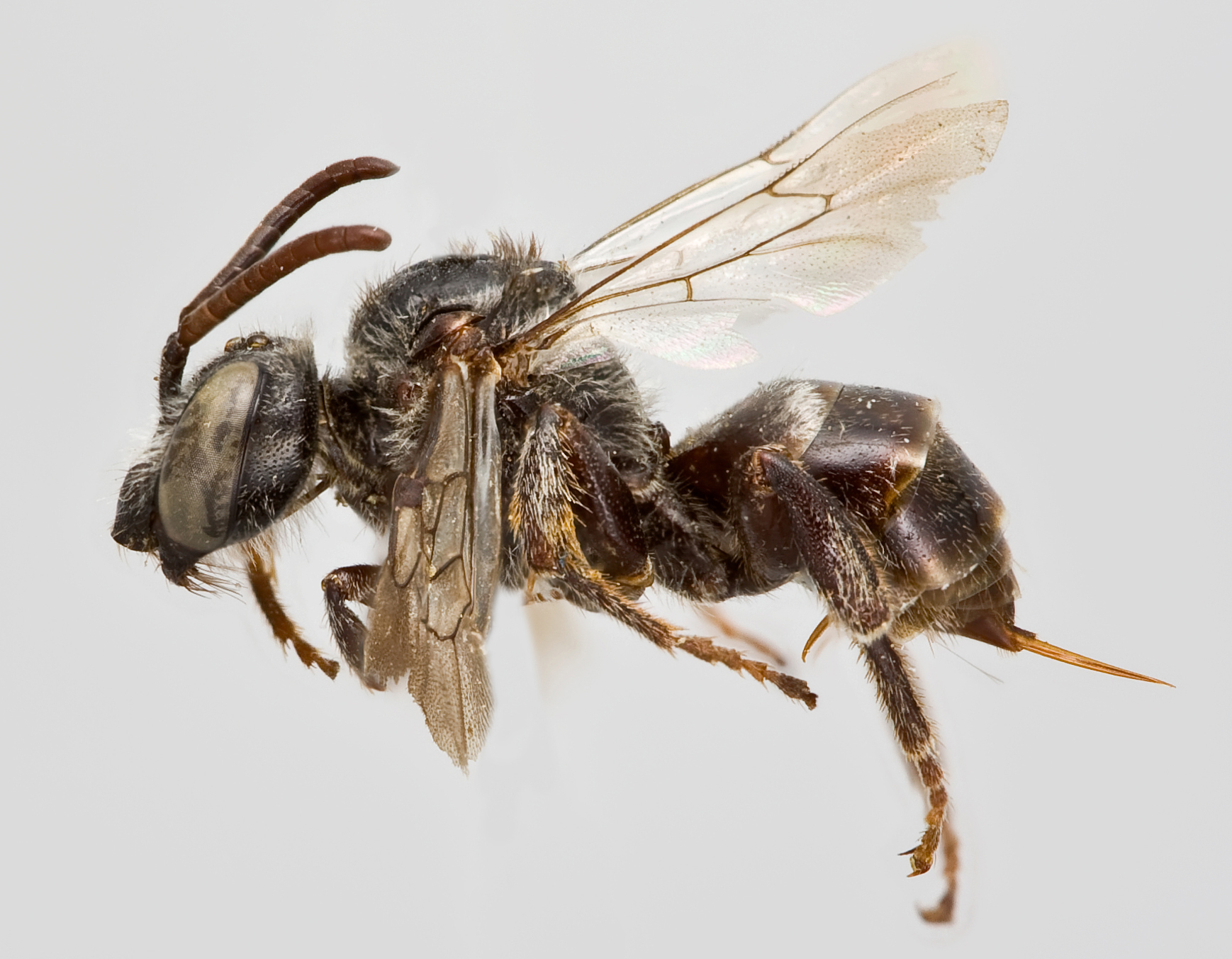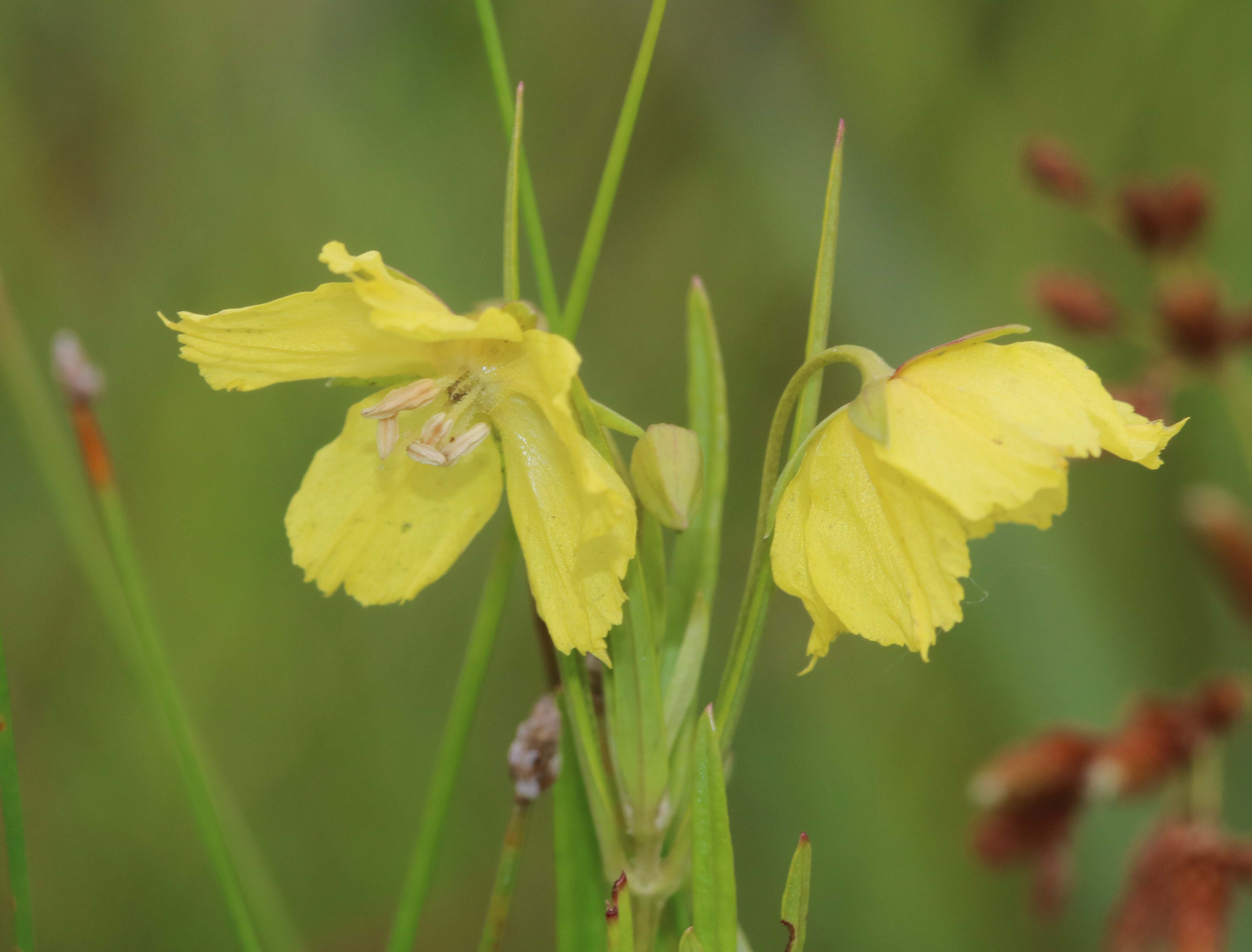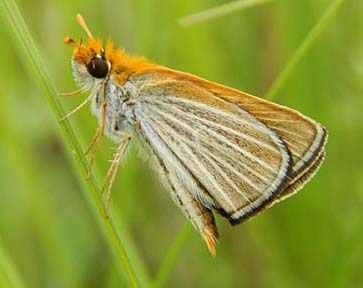
Smart Gardening: What makes a pollinator rare or endangered?
DOWNLOADMarch 16, 2020 - David Lowenstein and Nathaniel Walton, Michigan State University Extension; Patrick Beauzay, Veronica Calles-Torrez, Gerald Fauske, Esther McGinnis and Janet Knodel, North Dakota State University
Why are some pollinators in decline?
Nectar, pollen and nesting habitat are three major requirements of pollinators. When habitats (e.g., natural areas) are lost to agriculture, residential homes or commercial spaces, some insect pollinators can undergo a rapid decline. Specialized pollinators are more susceptible to habitat or food losses since they feed on only one or two plant families and in particular habitats.
A common factor that degrades habitat is contamination from herbicides that prevent flowers from blooming or insecticides that kill pollinators immediately or over time. One group of insecticides called neonicotinoids are applied as a seed coating to seeds before planting. Once planted, the chemical moves systemically throughout the plant and its flowers as it matures. Research suggests pollinators experience adverse effects to their health including reduced lifespan and disorientation when gathering nectar or pollen from neonicotinoid-treated plants.
Attracting species that live in a variety of conditions can be as simple as planting multiple types of flowering plants. However, rare and federally endangered pollinator species require specific conditions for success. These bees and butterflies are usually limited to undisturbed areas with the right host plants (Table 1). This tip sheet introduces a few of the rarer pollinators that are poorly known and only referred to by their scientific names.
|
Table 1. List of rare pollinators and plants used by adults or larvae. |
||
|---|---|---|
|
Pollinator |
Host plants |
Status |
|
Rusty patched bumble bee (Bombus affinis) |
Hydrangea, locust, goldenrod, blueberry, spotted Joe-pye weed, bee balm |
Endangered |
|
Yellow-banded bumble bee (Bombus terricola) |
Sweet clover, goldenrod |
Rare |
|
Epeoloides pilosulus |
Fringed loosestrife |
Rare |
|
Poweshiek Skipperling (Oarisma Poweshiek) |
Prairie dropseed, Mat Muhly, black-eyed Susan |
Endangered |
|
Karner blue butterfly (Lycaeides melissa samuelis) |
Blue lupine |
Endangered |
Meet the rare and endangered pollinators
Rusty patched bumble bee (Bombus affinis) and yellow-banded bumble bee (B. terricola)
Gardeners frequently see and recognize bumble bees throughout the growing season, but some species have declined rapidly in the past few decades. Two declining bumble bee species are native to the northern U.S. from the Dakotas eastward. Both feed on fewer plants than other bumble bees. In addition to habitat loss, their decline may be caused by a natural disadvantage in tolerating pathogens spread from commercially reared bumble bees.
The rusty patched bumble bee is identified by a brownish yellow patch surrounded by yellow on the second abdominal segment (Photo 1). The yellow-banded bumble bee lives in wooded areas and wetlands and is identified by a black line on the rear half of the thorax and a darker patch on the first yellow segment of the abdomen (Photo 2). Bumble bees have unique color patterns on their thorax and abdomen, and several illustrative guides exist to identify bumble bees and whether a bumble bee species is common or in decline.


Epeoloides pilosulus
This hard-to-pronounce species is a parasitic bee of Macropis, another rare bee. As a parasitic bee, Epeoloides pilosulus (Photo 3) lays its eggs in the other species’ nest, offloading its childcare responsibilities. The host bee, Macropis, only visits flowers in the Lysimachia genus such as fringed loosestrife (Photo 4). To find Epeoloides pilosulus, look in places where those flowers grow. That is how, after a 74-year absence, Michigan State University researchers located a single Epeoloides pilosulus in Midland, Michigan, in 2018. This species’ range includes areas between North Dakota and the Northeast U.S. While few records exist for North Dakota, it has recently been found across the Canadian border in Saskatchewan and Manitoba.


Poweshiek skipperling
This small, endangered butterfly (Photo 5) was once common in native prairies of the Great Plains and Upper Midwest. Emerging in late June through mid-July, adults live for only two weeks. It feeds on a variety of flowers and lays eggs on grasses, the food source for hatched larvae. Last seen in North Dakota in 2001 and Michigan in 2014, it has declined rapidly in the last 50 years due to habitat loss. Most remaining individuals are thought to be concentrated in small populations in Wisconsin and southeast Michigan.

Karner blue butterfly
Listed as endangered in 1992, this butterfly’s life cycle is dependent on one host plant, wild lupine. Due to loss of habitat and its larval host plant, it only occurs in Wisconsin, Minnesota and states in the Great Lakes region. Karner blue butterfly (Photo 6) has two generations, one beginning mid-May and a second in mid-July. Since tree canopies can shade out lupine and herbicides can kill the host plants, habitat restoration and protection are the only ways to preserve this species.
.jpg?language_id=1)
Protecting rare pollinators
Larger, more connected habitats away from urban and agricultural disturbances offer locations where pollinators can thrive. However, creating protected spaces alone cannot guarantee recovery of historically low population levels, since rare and endangered pollinators are dependent on the right grouping of plants and habitat.
Some rare species cling to isolated habitats, yet these pollinators can reappear in surprising places. The last confirmed sighting of rusty patched bumble bee in Michigan dates to the 1990s, but it was recently found near a commuter rail station in Chicago, Illinois. This record in an urban area and the rediscovery of Epeoloides pilosulus after multiple decades suggests rare pollinators are more accessible than previously imagined. Increased observations of rare pollinators through BioBlitzes, citizen science efforts and legislative advocacy, such as listing the rusty patched bumble bee as the Minnesota state bee, will improve awareness. Planting the right host plants and preserving key habitats or urban parks can lead to unexpected discoveries!
This publication is supported in part by the Crop Protection and Pest Management Program 2017-70006-27175 from the USDA National Institute of Food and Agriculture. Any opinions, findings, conclusions, or recommendations expressed are those of the author(s) and do not necessarily reflect the view of the U.S. Department of Agriculture.



 Print
Print Email
Email






